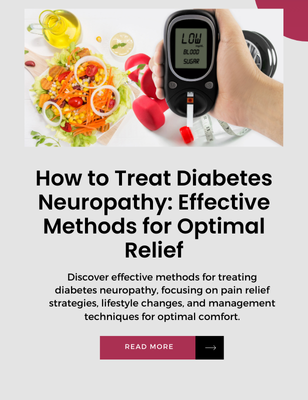Teaching preschoolers about dental health is a fun and important part of early education. Kids can learn good habits that will keep their teeth healthy for life.
A dental health theme for preschool combines games, songs, and hands-on activities to make oral care exciting for young children.

Preschool teachers have many options for dental-themed lessons. They can use tooth-shaped art projects or pretend play with toy dentist tools.
Simple science experiments show kids how different drinks affect teeth. Toothbrush painting is another creative way to talk about brushing.
Dental health themes connect to other parts of preschool learning too. Kids can practice counting teeth or sorting healthy and unhealthy foods for teeth.
Teachers might read books about going to the dentist to ease fears. Songs about brushing make the task more fun at home and school.
Key Takeaways
- Dental health themes use fun activities to teach preschoolers about oral care
- Hands-on projects and pretend play help kids learn about teeth and dentists
- Songs, books, and games make dental hygiene exciting for young children
Understanding Dental Health
Dental health is key for kids. Good habits start early. Healthy teeth help kids eat, speak, and smile with confidence.
What Is Dental Health?
Dental health means taking care of teeth and gums. It’s about keeping the mouth clean and free from disease.
Brushing teeth twice a day is a big part of dental health. Flossing helps too.
Kids should visit a dentist regularly. Dentists check for cavities and other problems. They also teach kids how to brush and floss the right way.
A healthy diet plays a role in dental health. Eating less sugar helps prevent cavities. Drinking water instead of sugary drinks is good for teeth.
The Importance of Healthy Teeth
Healthy teeth are vital for kids. They help children chew food properly. This aids in good nutrition and growth.
Strong teeth also help kids speak clearly.
Cavities can cause pain and make it hard to eat. They can lead to missed school days. Preventing cavities keeps kids happy and healthy.
Good dental health boosts self-esteem. Kids with healthy smiles feel more confident. They’re more likely to laugh and talk freely with others.
Healthy teeth in childhood set the stage for good dental health as adults. Teaching kids to care for their teeth now creates lifelong habits.
Basics of Oral Hygiene for Preschoolers
Teaching preschoolers good oral hygiene habits is key for healthy teeth and gums. Proper brushing, flossing, and using the right toothpaste help prevent cavities and build lifelong dental care routines.
Teeth Brushing Fundamentals
Preschoolers should brush their teeth twice a day for two minutes each time. Use a soft-bristled, child-sized toothbrush.
Hold the brush at a 45-degree angle to the gums and use gentle circular motions.
Brush all tooth surfaces: outer, inner, and chewing. Don’t forget the tongue! Make it fun with a timer or song.
Parents should help kids brush until around age 7-8. Supervise and check their work after.
Replace toothbrushes every 3-4 months or sooner if bristles fray.
The Role of Flossing
Flossing removes plaque and food bits between teeth where brushes can’t reach. Start flossing when teeth touch, usually around age 2-3.
Use about 18 inches of floss. Wrap most around middle fingers, leaving 1-2 inches to work with. Slide gently between teeth using a rubbing motion.
Curve the floss around each tooth in a C-shape. Move it up and down against the tooth sides.
Floss at least once daily. Parents should help until kids can do it alone, around age 10.
Introducing Toothpaste
Use a rice-grain sized smear of fluoride toothpaste for kids under 3. Increase to pea-sized amount for ages 3-6.
Choose kid-friendly flavors to make brushing more appealing.
Teach kids to spit out toothpaste, not swallow it. Rinse with water after brushing.
Look for toothpaste with the ADA Seal of Acceptance.
Fluoride strengthens tooth enamel and fights decay. If tap water lacks fluoride, ask the dentist about supplements.
Avoid whitening toothpastes for young children.
Dental Health-Themed Activities
Preschoolers learn best through hands-on activities. These dental health-themed activities mix fun and learning to teach kids about oral hygiene.
Creative Arts and Crafts
Painting with toothbrushes is a popular craft that kids love. Teachers can give each child a paper tooth cutout and a toothbrush dipped in white paint.
Kids brush the “tooth” clean, learning proper brushing motions.
Another fun craft is making tooth-shaped art using cotton balls. Kids glue cotton balls onto a tooth outline, creating a fluffy white tooth. This helps them visualize a clean, healthy tooth.
Playdough activities are great for fine motor skills. Kids can make teeth shapes and use plastic floss to “clean” between them.
This hands-on approach helps them understand flossing.
Engaging Science Experiments
The egg experiment is a classic dental health activity. Teachers soak eggs in different drinks overnight.
The next day, kids see how the eggshells (like tooth enamel) have changed color.
Another experiment uses white rocks as “teeth”. Kids brush half the rock with toothpaste and leave the other half bare.
Over time, they see how toothpaste protects teeth from stains.
Plaque experiments help kids see invisible germs. Using a dry-erase marker on laminated tooth shapes, kids “brush” away the pretend plaque with a toothbrush.
Fun Math and Literacy Games
Dental health syllable cards make a great literacy game. Kids clap out syllables in words like “toothbrush” or “floss”.
This builds phonological awareness while teaching dental vocabulary.
For math, teachers can use tooth-shaped counters. Kids sort them by color or size, count them, or use them for simple addition and subtraction games.
A tooth-brushing calendar is both a math and health activity. Kids mark each day they brush, learning about time and building good habits.
Incorporating Dental Health into Play
Play is a great way to teach kids about dental health. It makes learning fun and helps them remember important habits. Let’s look at some playful ways to teach dental care.
Pretend Play and Role-Playing
Pretend play helps kids learn about dental health. Set up a dentist’s office in the classroom. Use a chair, toy dental tools, and a mirror.
Kids can take turns being the dentist and patient.
Make paper teeth for kids to “brush” with pretend toothbrushes. This teaches good brushing habits.
Use puppets to act out dental visits. This can help ease fears about going to the dentist.
Create a store with toy toothbrushes, toothpaste, and floss. Kids can practice choosing dental items.
This teaches them about dental products.
Using Play Dough and Manipulatives
Play dough is a fun way to learn about teeth. Make white play dough “teeth” and have kids clean them with toothbrushes.
They can also make play dough cavities and “fill” them.
Use egg cartons to make tooth models. Kids can paint them white and practice flossing with yarn. This teaches proper flossing technique.
Create a play dough tray with dental tools. Kids can make teeth and pretend to clean them.
Add small beads for “cavities” to remove.
Use buttons or pom-poms to count “teeth” on paper mouths. This combines math with dental learning.
Integrating Dental Health into Curriculum
Teaching dental health to young children is important for developing good habits early. Preschools can use fun activities and lessons to make learning about teeth exciting and memorable.
Lesson Planning for Dental Health
Dental health preschool lesson plans can cover many topics. Teachers might start with basic tooth anatomy using models or pictures.
They can explain how teeth grow and change.
Lessons often include proper brushing techniques. Kids can practice on oversized toothbrushes and mouth models.
Counting and sorting activities with tooth-shaped objects teach math skills too.
Science experiments show how certain drinks affect teeth. Eggs soaked in soda demonstrate staining. Stories about visiting the dentist reduce fear. Puppet shows make learning fun.
Curriculum Aligned Printables
Dental health printables help reinforce lessons. Coloring sheets of healthy foods for teeth are popular.
Worksheets for counting teeth or matching dental tools to their names blend math and vocabulary.
Pre-K and kindergarten students enjoy tooth-themed alphabet activities. “T is for Tooth” pages work well. Sequencing cards show proper brushing steps.
Printable centers let kids learn independently. Tooth-shaped puzzles improve fine motor skills.
Sorting mats for “good” and “bad” foods for teeth teach nutrition basics.
Memory games with dental images are engaging. “Brush away the cavities” worksheets make cavity prevention fun.
These printables align with early learning standards while focusing on dental health.
Songs and Rhymes to Promote Dental Care
Fun songs and rhymes can make dental care more enjoyable for preschoolers. These catchy tunes teach kids about brushing techniques and the importance of oral hygiene in a memorable way.
Brush Your Teeth Song
The Brush Your Teeth song is a popular choice for teaching preschoolers about dental care. This simple tune uses repetitive lyrics to reinforce good brushing habits.
The song typically follows a basic melody with words like:
“Brush, brush, brush your teeth,
Brush them every day.
Up and down and all around,
Keep the germs away.”
Some versions include actions for kids to follow along, like miming brushing motions. This helps children learn proper technique while singing.
Teachers and parents can find many variations of the Brush Your Teeth song online. Popular children’s channels offer animated versions that capture kids’ attention. These videos often feature colorful characters demonstrating correct brushing methods.
Healthy Eating and Oral Health
Good food choices and eating habits play a big role in keeping teeth healthy. Kids can learn which foods help their teeth and which ones can cause problems.
Identifying Healthy Food Choices
Healthy food choices for teeth include fruits, vegetables, and dairy products.
Apples and carrots act like natural toothbrushes. They clean teeth while kids chew.
Cheese and milk have calcium that makes teeth strong.
Crunchy foods like celery help make more spit. This washes away bits of food stuck on teeth.
Drinking water after meals also helps clean the mouth.
Kids can learn to pick snacks that are good for teeth.
Nuts, plain yogurt, and hard-boiled eggs are smart choices. These foods don’t leave sticky sugar on teeth.
Understanding the Impact of Sugar on Teeth
Sugar is not good for teeth. It feeds the germs that cause cavities.
Sticky sweets like candy and cookies are the worst. They stay on teeth for a long time.
Soda and juice have lots of sugar too.
Kids can learn to drink less of these. Water and milk are better picks.
If kids do have sweets, it’s best to eat them with meals. This way, other foods help clean teeth.
Dental health activities can teach kids about sugar’s effects.
They can sort foods into “good for teeth” and “bad for teeth” groups. This helps them make smart choices.
Events and Observation
Preschools often organize special events to teach kids about dental health. These activities make learning fun and help children build good habits.
Celebrating Dental Health Month
February is National Dental Health Month. Many preschools plan exciting events during this time.
They might invite a dentist to visit and talk to the kids. The dentist can show proper brushing techniques and explain why healthy teeth matter.
Teachers often set up pretend dental offices in the classroom.
Kids can take turns being dentists and patients. This helps them feel more at ease about real dental visits.
Some schools organize tooth-friendly snack parties. They serve foods that are good for teeth, like cheese and crunchy veggies. This teaches kids about making healthy food choices.
Art projects are another popular activity.
Children might make tooth-shaped crafts or create posters about dental care. These projects reinforce what they’ve learned in a hands-on way.
Visiting the Dentist
Taking preschoolers to the dentist helps them learn about oral health. It sets the stage for a lifetime of good dental habits.
Preparing for the First Visit
Start by reading books about dentists to your child. This can help ease any fears.
Play pretend dentist at home using a toothbrush and mirror. Let your child be the dentist for their stuffed animals.
Choose a pediatric dentist who specializes in treating young children.
Schedule the visit for a time when your child is well-rested. Bring a comfort item like a favorite toy.
Talk positively about the dentist.
Avoid using words like “hurt” or “pain”. Instead, focus on how the dentist helps keep teeth healthy and strong.
Learning from the Dentist Experience
At the office, let your child explore the waiting room toys and books. This helps them feel more at ease.
During the exam, the dentist will count and clean your child’s teeth. The dentist may show your child how to brush properly.
They might use models or pictures to explain dental health. Many offices give out stickers or small prizes after the visit.
Ask the dentist for tips on home dental care.
They can advise on toothpaste amount, flossing, and healthy snacks. Use this visit as a chance to reinforce good habits at home.
Creating a Dental Health Resource Library
A well-stocked dental health resource library helps preschoolers learn about oral hygiene. It provides engaging materials that make dental care fun and accessible for young children.
Recommended Dental Health Books
Dental health books are great tools for teaching kids about oral hygiene.
“The Tooth Book” by Dr. Seuss is a classic that introduces teeth in a fun way. “Brush Your Teeth, Please” by Leslie McGuire features pop-up pictures demonstrating proper brushing techniques.
“The Berenstain Bears Visit the Dentist” helps ease fears about dental checkups.
For a more educational approach, “Open Wide: Tooth School Inside” by Laurie Keller teaches about different types of teeth and their functions.
Dental health literacy activities can supplement book reading.
Create tooth-shaped flashcards with dental vocabulary words. Make a simple emergent reader about brushing teeth using basic sight words and pictures.
Include interactive books like “The Teeth that Looked for a New Mouth” by Jill Murphy, which has flaps to lift. “Sugar Bugs” by Dr. Ben Magleby uses colorful illustrations to explain cavity formation.
Frequently Asked Questions
Dental health education for preschoolers involves interactive activities, hands-on learning, and creative approaches. These methods help young children grasp important oral care concepts and develop good habits early on.
How can we introduce preschoolers to the basics of dental hygiene?
Use fun and engaging activities to teach kids about teeth and oral care.
Read picture books about going to the dentist or brushing teeth. Play tooth-brushing games with large toy teeth and oversized toothbrushes.
This lets kids practice proper brushing motions in a fun way.
What are effective dental health circle time activities for young children?
Sing songs about brushing teeth or visiting the dentist. Use puppets to act out dental hygiene routines.
Count teeth together as a group. Make a tooth-shaped graph to track how many kids have lost teeth.
Which dental health crafts can help preschoolers understand oral care?
Create tooth-shaped art projects using paper plates, cotton balls, or Play-Doh.
Kids can decorate “healthy” and “unhealthy” teeth. Make toothbrush paintings by dipping toothbrushes in paint.
This reinforces proper brushing motions while creating colorful art.
Can you suggest sensory activities that relate to dental health for preschool?
Set up a sensory bin with white beans or cotton balls to represent teeth.
Add small toothbrushes for kids to practice “brushing.” Use shaving cream on a table to mimic toothpaste.
Let kids practice writing letters or drawing shapes in it.
How do community helpers like dentists fit into a preschool curriculum?
Invite a local dentist to visit the classroom and talk about their job.
Set up a dramatic play area as a dentist’s office. Kids can take turns being the dentist, patient, and receptionist.
This helps reduce fear of dental visits.
What are some engaging dental health science experiments for preschoolers?
Demonstrate how acid affects teeth using hard-boiled eggs and vinegar.
Show how fluoride protects teeth by comparing eggs soaked in fluoride to those without.
Use disclosing tablets to show plaque on teeth. This visual demonstration helps kids understand why brushing is important.













